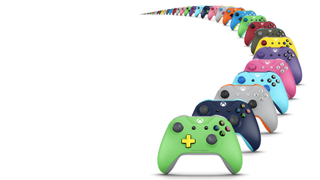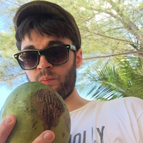At E3 2016, Microsoft revealed the Xbox Design Lab, a program that gives customers the proverbial keys to the designing kingdom. Special edition controllers and hardware have long been staples of the gaming industry, but now Xbox players would be able to design a controller how they wanted, not reliant on some preconceived notion of identity.
And while Monique Chatterjee, a principal designer at Xbox, credits the basic idea of allowing consumers to have more say in designs to the fans themselves – and such talks have been on-going for years – she also mentioned the rising tide of customization that the teams were seeing in other products, such as NikeiD sneakers, custom Converse, and even bicycles.
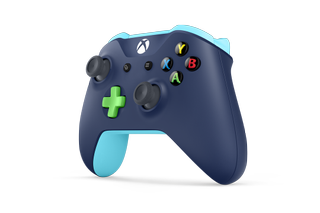
“So, it’s just kind of an ongoing conservation that I feel like it pops up, you know, it pops up with a lot of projects that we run through the Industrial Design Team,” Chatterjee says. “And for controllers…the time was right. [It] seemed really appropriate because controllers are so personal to people.”
But how do those controllers end up in players’ hands? How does something like factory-made controllers that consumers are usually told what colors to pick from, not given options, manage to meet the demands of fans and controller connoisseurs alike?
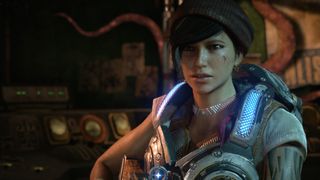
Well, some things are the same. The controllers themselves are made with Microsoft’s same supplier network and manufacturing process and partners, but with some technical differences. Chatterjee said they also had to come up with additional and more complex tooling that was able to handle myriad resin colors at a higher speed or flush the colors quicker. A small supply of each of the color options is kept and monitored, in order to make sure that nothing runs out, as well.
Of course, when it comes to managing that supply of parts, not all spectrums on the rainbow are created equal. Not everybody is going to want neon green and purple controllers in the brightest hues imaginable.
More polarizing colors like purples, pinks, and yellows might not see the same amount of product stocked
“So, I think some of it is probably looking at numbers, and then some of it is just kind of going in with some knowledge of what we think we’ll sell a lot of,” Chatterjee says.
The team has “a lot of education” on which colors people generally gravitate towards: neutral colors on main case parts like black, whites, and greys tend to be popular, with Chatterjee possibly putting blues and reds next after those. However, “more polarizing” colors like purples, pinks, and yellows – sorry fans of those colors! -- might not see the same amount of product stocked.
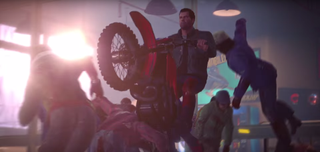
“So, there’s some knowledge going into that, and then also just, you know, sort of using the data,” Chatterjee says.
If you think picking out and color coordinating an outfit is tricky, just imagine picking a wardrobe for an entire customization line. Figuring out the exact palette to offer on the Lab was a challenge. They had to decide how many colors to offer and how those colors would work well together, while also having the selection provide variety. But the more colors, the more manufacturing and logistical concerns arose. Some colors just made sense, though.

“We tried to develop the colors based on which colors are the most popular and what some of the cultural or like game references might be for each color,” Chatterjee says.
This meant popular colors like blue got different variations, such as midnight blue, photon blue, and a more pastel glacier blue. Yellow on the other hand was more streamlined: The team took inspiration from racing cars and picked a more broadly applicable shade.

And of course – this is Xbox we are talking about – so we can’t forget the brand’s iconic green, either.
“Green was a really interesting one for us, because Xbox has a cultural connection to green, so we wanted to make sure that we had the super bright, punchy green that’s like reminiscent of the 360,” Chatterjee says.
Given the brand’s penchant for FPS titles however, they also added a military green to the selection.
"Xbox has a cultural connection to green, so we wanted to make sure that we had the super bright, punchy green that’s like reminiscent of the 360"
Monique Chatterjee
“Yeah, so, just coming up with this color palette that kind of speaks to Xbox fans and the sort of culture around that space, and then also just people’s color preferences in general, was like a big challenge,” Chatterjee says.
On top of that, taking these colors and then applying them to the specific, individual parts of each controller was another barrier. Darker colors can be used on thumb sticks, top cases, D-pads, triggers, bumpers, and bottoms cases, but the parts are all made of different resins – different plastic compounds – so getting the UV stability similar across the board was something that had to be locked in.
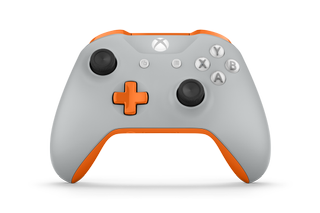
“And we needed to basically get our resin formulas up to a specific spec where we have confidence that if you would leave your controller out in the sunlight it’ll still look good in a couple years, all the parts will fade kind of at the same rate,” Chatterjee says. “They shouldn’t fade much at all, but they all meet the same UV stability grade…so just kind of getting all the resin formulas on par with each other was a huge challenge for this program.”
Different areas of the controller also are currently only available in certain colors, as well. For example, thumb sticks are only in darker colors, and while Chaterjee says that lighter thumb sticks are doable, they may have required more time to meet the same standards. And, well, it’s easier to keep dark thumb sticks cleaner.

Other buttons – such as the A/B/X/Y buttons -- are also available in fewer colors, due to the technical process behind creating them. Called triple-shot buttons, they are created by injecting three different plastics: the background and letter colors, and then the top clear color. This means even more stock that would have to be kept to change each of these colors. The view and menu buttons are double-shot, and the tools for those buttons are also trickier, and Chatterjee says the process for switching colors would further complicate their creation.
After a controller is designed, it is then turned into a string of code – which each number corresponding to a specific color – which then heads to the factory. The controllers are also all hand assembled, and then delivered within 14 days.
"It all kind of comes down to super-smart logistics"
Monique Chatterjee
Chatterjee believes said turnaround speed is due to careful inventory management, as well as manufacturing small groups of the parts, and keeping specific amounts on hand in the assembly room.
“Yeah, it all kind of comes down to super-smart logistics,” Chatterjee says.
Internally at Microsoft, putting the project together was actually akin to creating a new business. This included bringing together teams that typically don’t work that close, something that was “huge,” Chatterjee says. The creation of the Design Lab brought together teams including the Interactive Design Team, Xbox.Com, the Microsoft Store, as well as the creation of new relationships with their factory.
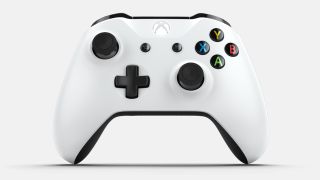
“…What’s really exciting about bringing all those groups together and getting that process figured out, is that now we have a platform for doing this, and so that’s the development of a whole new business model for us,” Chatterjee says.
And while starting such a program did require an investment, and there was a minimum sales quantity the team needed to hit to cover that – a number Chatterjee wouldn’t share – convincing people that the program was something that Microsoft should do wasn’t difficult at all.

“…There was so much excitement around doing something like this, just from the excitement that we got from fans before we even started trying to do something like this, all the way through, we did more pointed research as we got closer and closer to actually shipping this sort of product, and just from all of those points there was so much consumer excitement…it was kind of really obvious that meeting that minimum quantity shouldn’t be difficult,” Chatterjee says. “People were really excited and really ready for a product like this.”
However, there was initial talk about how custom fan controllers might impact other segments of the Xbox business, such as limited edition controllers that Microsoft designs themselves. It was quickly brushed aside.
"It’s really different to tell a game story through the hardware than it is to tell a personal story."
Monique Chatterjee
“There was a definitely a lot of talk about that potential conflict in the beginning, but I think we moved past it pretty quickly when we realized that the value of Design Lab was really putting the creative control, or the means of expression, in the fans’ hands,” Chatterjee says. “That’s something totally different and totally just personal in a very different way than what we do with special editions and limited editions, where we’re understanding a game IP or a game genre and really trying to tell a story through the hardware. It’s really different to tell a game story through the hardware than it is to tell a personal story.”
Microsoft was ultimately able to “reconcile” how each product line had value, and Chatterjee thinks they are seeing how the Design Lab holds a different meaning to consumers. So far, the site has received millions of views, with hundreds of thousand designs created.

And as for the future of the Design Lab, the team is looking to expand to additional markets, and the possibility of more colors down the road, as well.
“One of my favorite parts is checking out the community pages and seeing the names that people gave their controllers…just seeing what people named their designs, that kind of gives you like a little insight into where their head was when they were designing their controller, and you can just tell that each thing is so special,” Chatterjee says.
